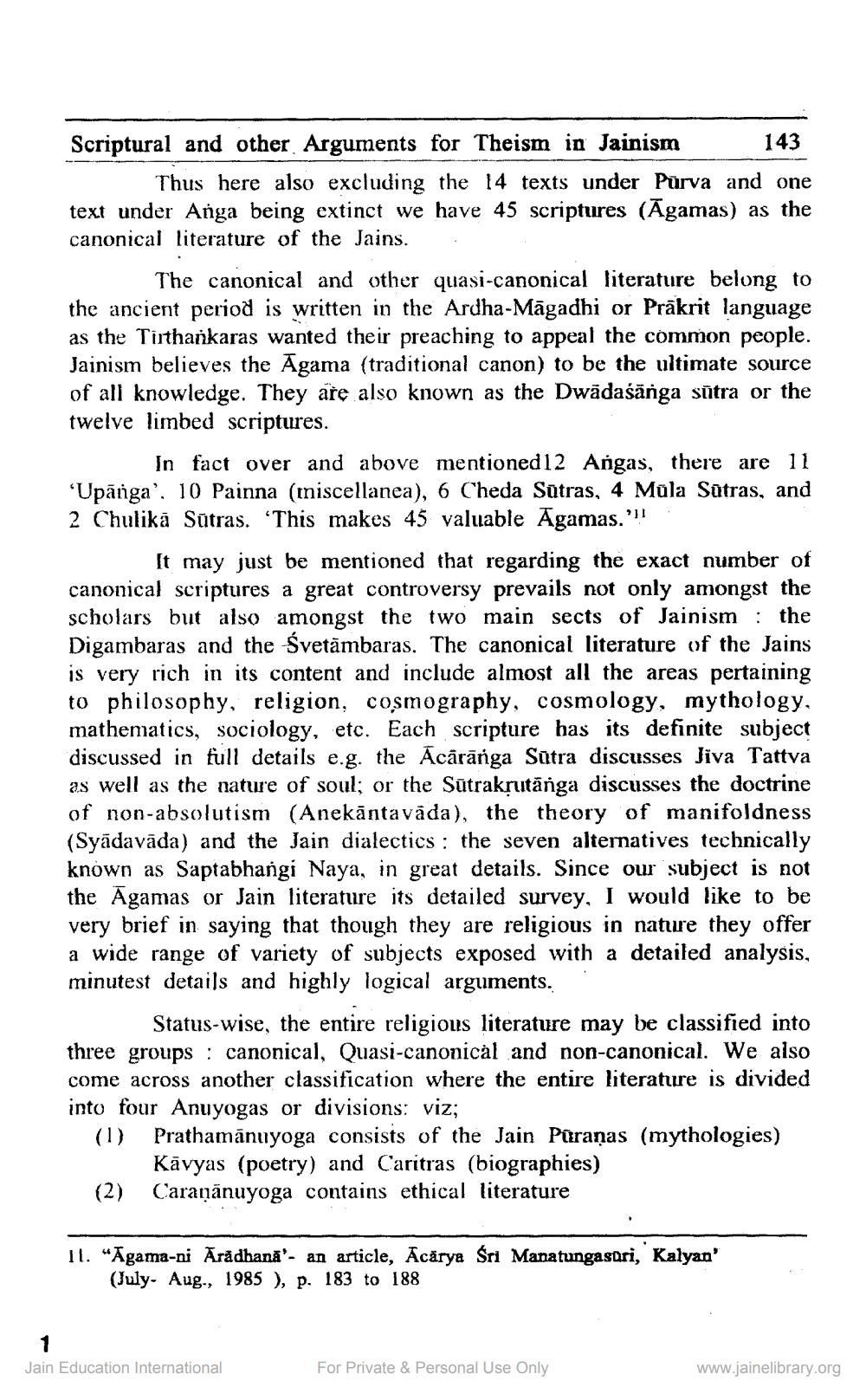________________
Scriptural and other Arguments for Theism in Jainism 143
Thus here also excluding the 14 texts under Pūrva and one text under Anga being extinct we have 45 scriptures (Āgamas) as the canonical literature of the Jains.
The canonical and other quasi-canonical literature belong to the ancient period is written in the Ardha-Māgadhi or Prākrit language as the Tirtharkaras wanted their preaching to appeal the common people. Jainism believes the Agama (traditional canon) to be the ultimate source of all knowledge. They are also known as the Dwādaśänga sutra or the twelve limbed scriptures.
In fact over and above mentioned 12 Angas, there are 11 *Upānga'. 10 Painna (iniscellanea), 6 Cheda Sūtras, 4 Mula Satras, and 2 Chulika Sūtras. “This makes 45 valuable Agamas.'!!
It may just be mentioned that regarding the exact number of canonical scriptures a great controversy prevails not only amongst the scholars but also amongst the two main sects of Jainism : the Digambaras and the Svetāmbaras. The canonical literature of the Jains is very rich in its content and include almost all the areas pertaining to philosophy, religion, cosmography, cosmology, mythology, mathematics, sociology, etc. Each scripture has its definite subject discussed in full details e.g. the Acārānga Satra discusses Jiva Tattva as well as the nature of soul; or the Sūtrakrutānga discusses the doctrine of non-absolutism (Anekāntavāda), the theory of manifoldness (Syādavāda) and the Jain dialectics : the seven alternatives technically known as Saptabhangi Naya, in great details. Since our subject is not the Agamas or Jain literature its detailed survey, I would like to be very brief in saying that though they are religious in nature they offer a wide range of variety of subjects exposed with a detailed analysis, minutest details and highly logical arguments.
Status-wise, the entire religious literature may be classified into three groups : canonical, Quasi-canonical and non-canonical. We also come across another classification where the entire literature is divided into four Anuyogas or divisions: viz; (1) Prathamānuyoga consists of the Jain Pūraņas (mythologies)
Kāvyas (poetry) and Caritras (biographies) (2) Caraṇānuyoga contains ethical literature
il. “Agama-ni Aradhana'- an article, Acärya Sri Manatungasri, Kalyan'
(July. Aug., 1985), p. 183 to 188
Jain Education International
For Private & Personal Use Only
www.jainelibrary.org




